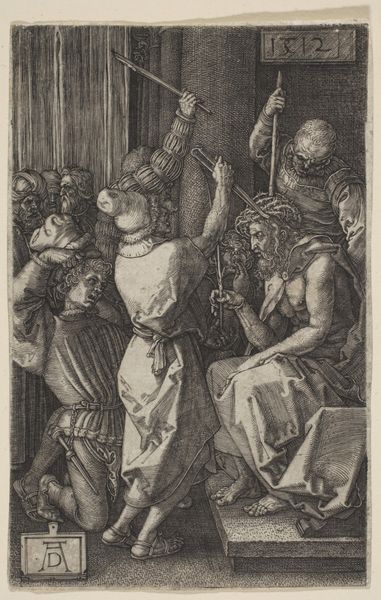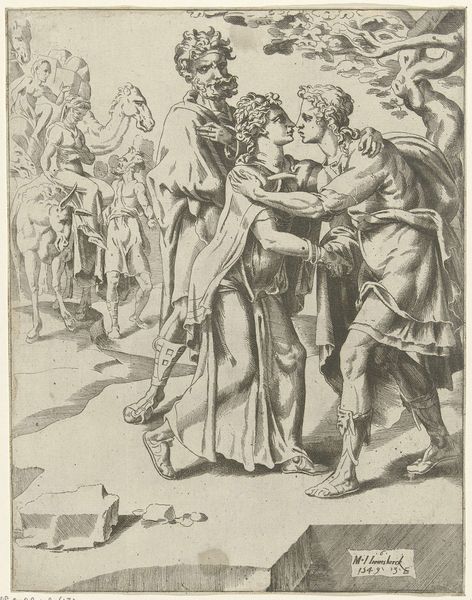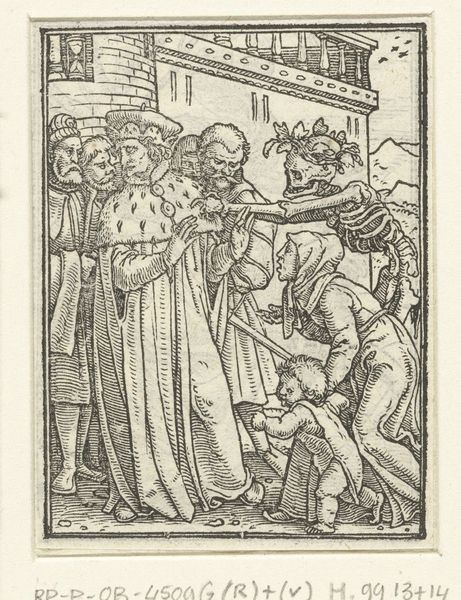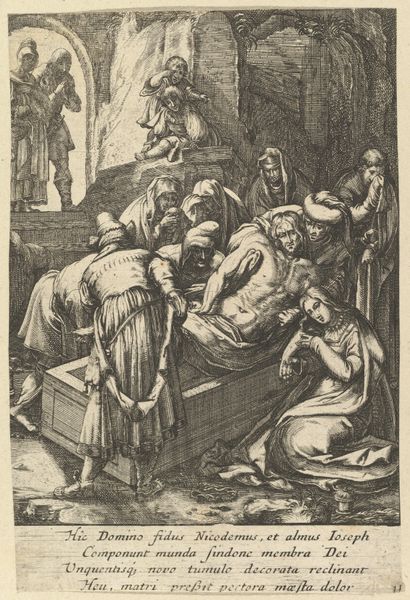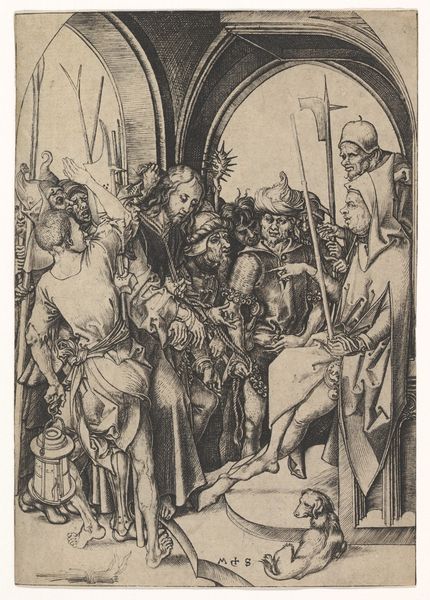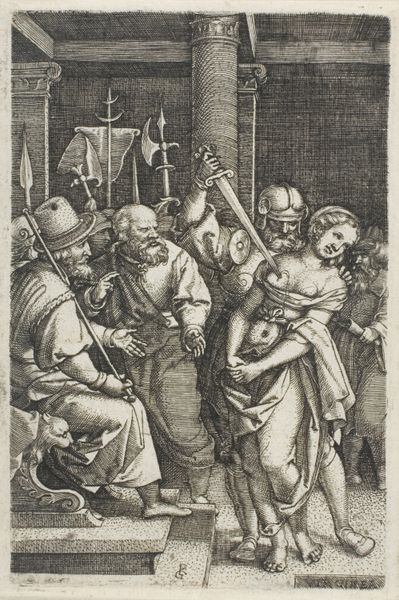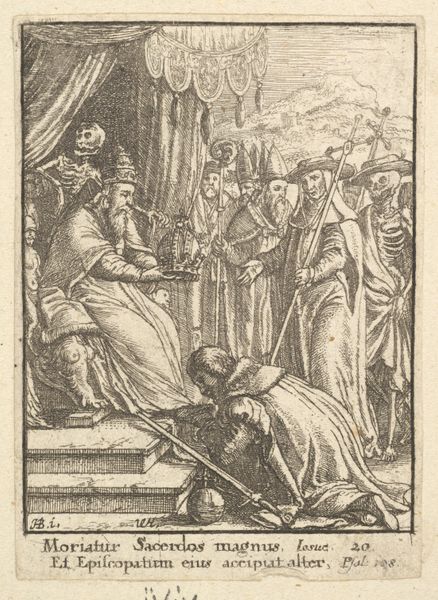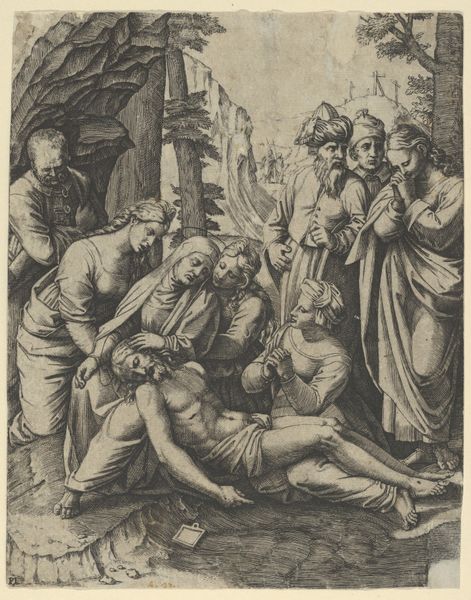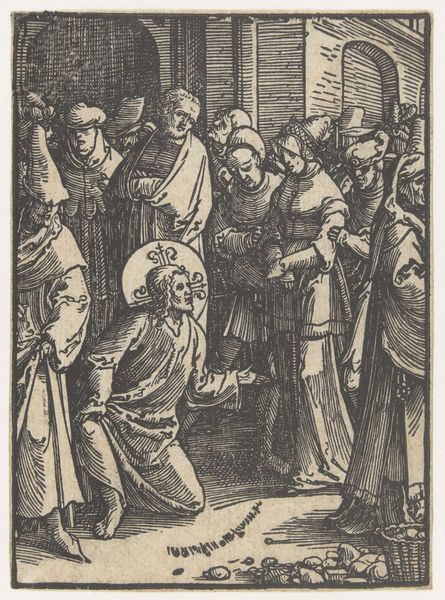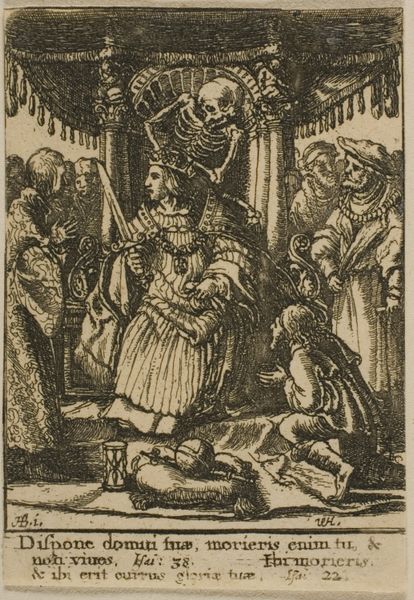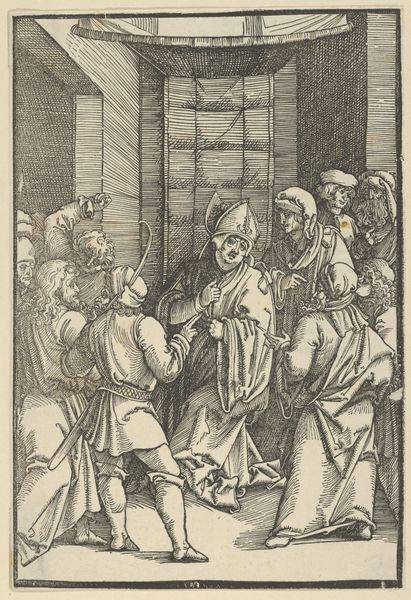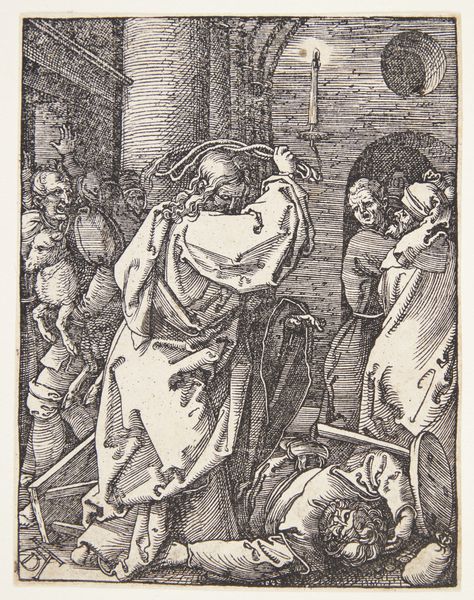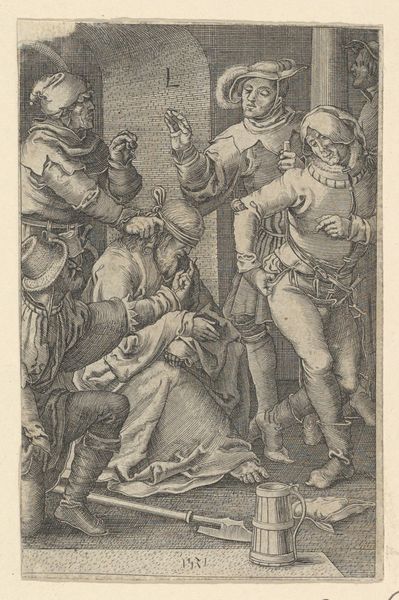
drawing, print, etching, paper
#
portrait
#
drawing
#
allegory
#
narrative-art
#
baroque
# print
#
etching
#
old engraving style
#
figuration
#
paper
#
genre-painting
#
history-painting
Dimensions: 72 × 52 mm (sheet, trimmed within platemark)
Copyright: Public Domain
Curator: Editor: This is "The Duke and Death," an etching by Wenceslaus Hollar from 1651. It's incredibly detailed for its size! The grim reaper is interacting with what seems to be a royal figure surrounded by people... what jumps out to me is how death is personified and very active in this scene. How do you interpret this work? Curator: It's interesting you point that out. Hollar created this print during the aftermath of the Thirty Years' War, a time of immense social and political upheaval, exacerbated by widespread disease and famine. So, when I see "Death" engaging with a Duke, I am less struck by a general memento mori and more by the devastating critique of power and privilege during times of crises. What do you notice about how "Death" is rendered versus the Duke? Editor: Well, Death is actively dragging the Duke and those who are clinging to him...there's a mother, maybe, trying to save her child. Is Hollar commenting on who suffers most during these periods? Curator: Precisely. Hollar is critiquing the structures that allow certain individuals to maintain their status while others are left vulnerable. The image becomes less about the inevitability of death for everyone and more about the inequitable distribution of suffering and loss dictated by social hierarchy. Notice, too, the Latin inscription. Editor: Yes! It looks like it speaks to those powerful men being brought down, losing all their arrogance… Curator: It reinforces the reading of this print as a scathing indictment of power, rather than just a meditation on mortality. How does knowing the historical context shift your understanding of the work? Editor: It makes it so much more pointed and angry. What initially seemed like a universal statement on death is actually a condemnation of the powerful who benefit from widespread suffering. Curator: Exactly! The power of art lies in its ability to both reflect and challenge the norms of its time. It forces us to confront uncomfortable truths about society. Editor: That's powerful. I’ll definitely be looking at art with a different lens now. Curator: As will I. It's a print that resonates profoundly, especially when we consider how those dynamics of power still influence who suffers most today.
Comments
No comments
Be the first to comment and join the conversation on the ultimate creative platform.
